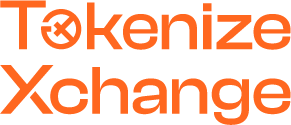An Overview Of Blockchain Scalability

Scalability has been one of the major issues that blockchain networks have faced in recent years. To have a deeper understanding of blockchain scalability, let’s explore this article with #Tokenize101.
What is Blockchain Scalability?
Blockchain Scalability refers to the ability of a blockchain network to handle an increasing number of transactions or data without compromising its performance, speed, or security. It is a critical factor for the widespread adoption of blockchain technology, as scalability determines the network’s capacity to handle a large volume of transactions efficiently.
In traditional centralized systems, scalability is often achieved by adding more resources, such as servers or hardware, to handle the increased workload. However, in the decentralized nature of blockchain, scalability is a complex challenge due to the distributed and consensus-driven nature of the network.
Blockchain Scalability Trilemma
The blockchain scalability trilemma, also known as the scalability-security-decentralization trilemma, is a concept that highlights the inherent trade-offs between scalability, security, and decentralization in blockchain networks. The trilemma suggests that it is challenging to achieve all three aspects simultaneously, and improving one aspect often comes at the cost of sacrificing one or both of the other two.
1. Scalability: Scalability refers to the ability of a blockchain network to handle an increasing number of transactions or data. Improving scalability typically involves increasing the transaction throughput and reducing latency. However, achieving high scalability often requires compromises in terms of security and decentralization.
2. Security: Security is a critical aspect of blockchain networks, ensuring the integrity and immutability of the data stored on the blockchain. Improving security involves maintaining a robust consensus mechanism, strong cryptographic algorithms, and resistance to attacks. However, implementing high-security measures can limit scalability and increase transaction processing time.
3. Decentralization: Decentralization is a core principle of blockchain, distributing power and control among multiple participants or nodes. It makes a guarantee that no one person or organization has total control over the network. However, achieving high decentralization can lead to slower transaction processing and increased resource requirements, limiting scalability.

Source: ResearchGate
The trilemma implies that optimizing one aspect often comes at the expense of the others. For example, increasing scalability may require sacrificing some level of decentralization or security. Similarly, enhancing security might lead to reduced scalability or increased centralization.
Blockchain Scalability Problems & Solutions
1. Limited Transaction Throughput: One of the main scalability problems is the limited number of transactions that can be processed per second. Bitcoin, for example, has a block size limit of 1MB, which limits the number of transactions that can be included in each block. Similarly, Ethereum’s current design allows for around 15 transactions per second, which may not be sufficient for global-scale adoption.
2. Slow Confirmation Times: Another scalability problem is the time it takes for transactions to be confirmed and added to the blockchain. In Bitcoin, for instance, it can take several minutes to hours for a transaction to receive sufficient confirmations. Ethereum’s confirmation times can also vary depending on network congestion.
3. High Transaction Fees: As the demand for blockchain transactions increases, so does the competition for block space. This often leads to higher transaction fees, making it less feasible for microtransactions or applications with low-value transactions to operate efficiently.
4.Blockchain Bloat: The continuous growth of the blockchain size can also become a scalability problem. As more transactions are added to the blockchain, the storage requirements for running a full node increase, which may limit participation and decentralization.
Addressing these scalability problems is crucial for blockchain networks to achieve mainstream adoption and support a wide range of applications. Various solutions and approaches, such as:
1. Segregated Witness (SegWit): SegWit is a protocol upgrade that separates transaction signatures from the transaction data, allowing for more transactions to be included in each block. This effectively increases the transaction throughput without increasing the block size.
2. Sharding: Sharding is a technique that involves partitioning the blockchain network into smaller, more manageable subsets called shard chains. Each shard chain can process its own set of transactions, increasing the overall transaction throughput of the network.
3. Layer 2 Solutions: Layer 2 solutions, such as the Lightning Network for Bitcoin and state channels for Ethereum, aim to handle a large number of transactions off-chain, reducing the burden on the main blockchain. These solutions enable faster and cheaper transactions by leveraging the security of the underlying blockchain.
4. Proof-of-Stake (PoS): Many blockchain networks are transitioning from the energy-intensive Proof-of-Work (PoW) consensus mechanism to Proof-of-Stake (PoS). PoS relies on validators staking their cryptocurrency holdings to secure the network, reducing the need for computational work. This transition can significantly improve scalability by increasing transaction throughput and reducing energy consumption.
5. Off-chain Scalability Solutions: Off-chain scalability solutions, such as sidechains and payment channels, allow for the execution of transactions off the main blockchain. These solutions enable faster and more scalable transactions while still maintaining the security and integrity of the main blockchain.
Conclusion
In conclusion, blockchain scalability remains a significant challenge for the widespread adoption of blockchain technology. While various solutions have been proposed and implemented, such as sharding, sidechains, and layer 2 protocols, there is no one-size-fits-all approach to scalability. Blockchain networks must find a balance between decentralization, security, and scalability, as increasing scalability often comes at the cost of one or both of the other two factors.
Overall, while blockchain scalability remains a complex issue, the ongoing research and development efforts provide hope for the future scalability of blockchain networks, paving the way for wider adoption and utilization of this transformative technology.
Disclaimer
Cryptocurrencies are subjected to high market risk and volatility despite high growth potential. Users are strongly advised to do their research and invest at their own risk.


